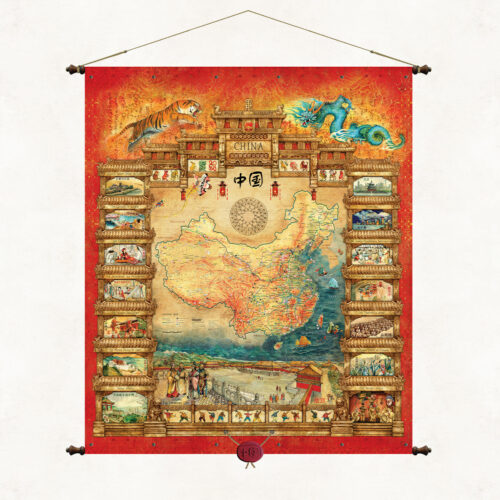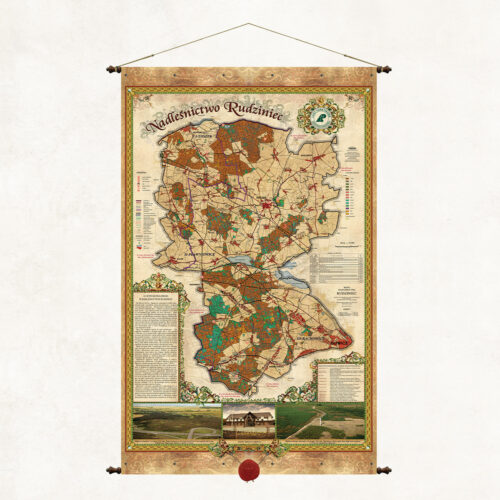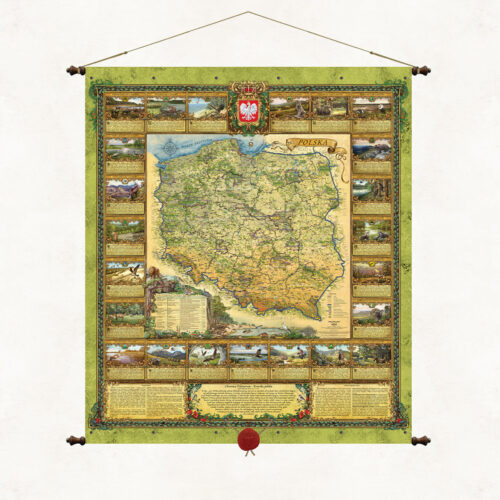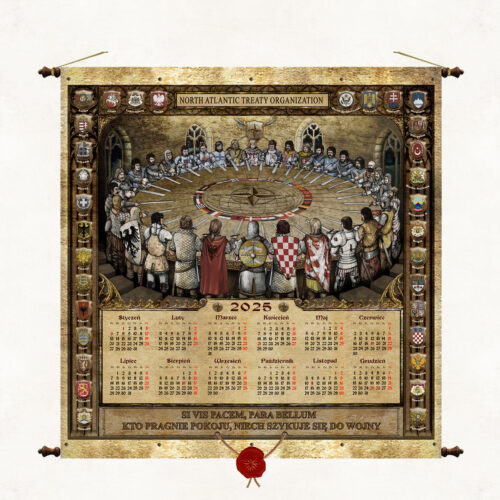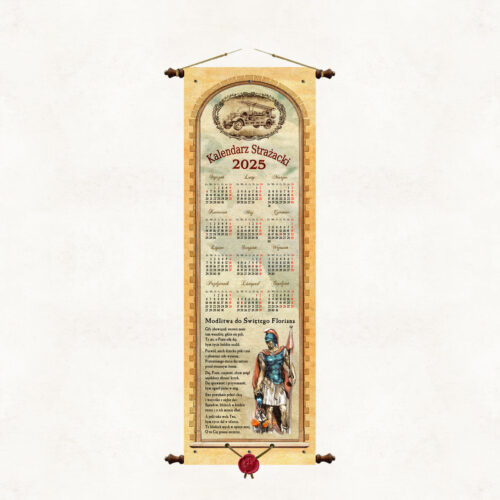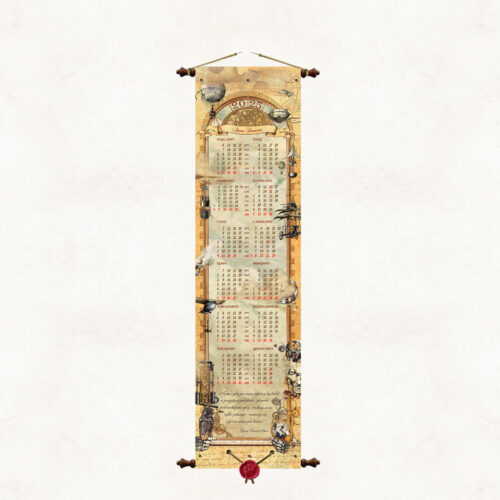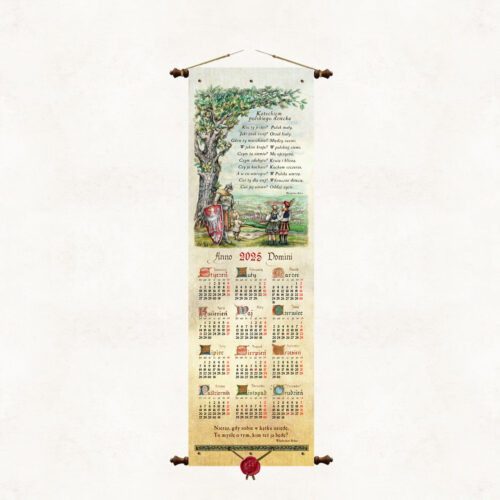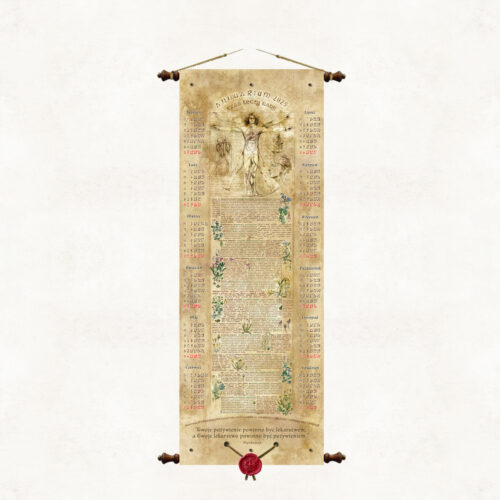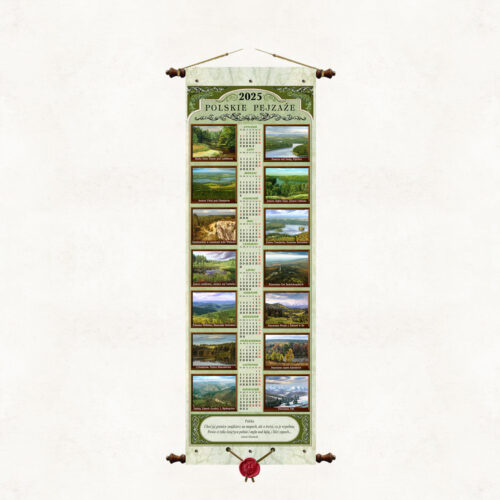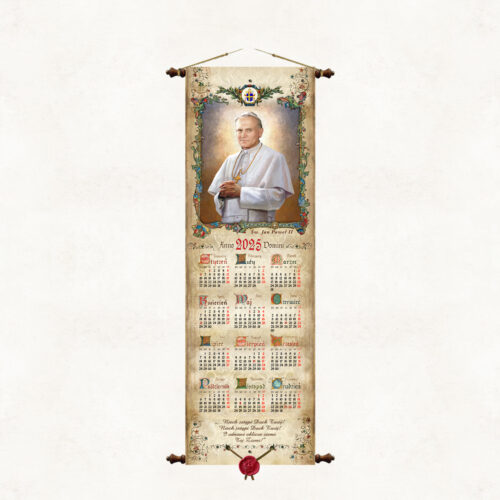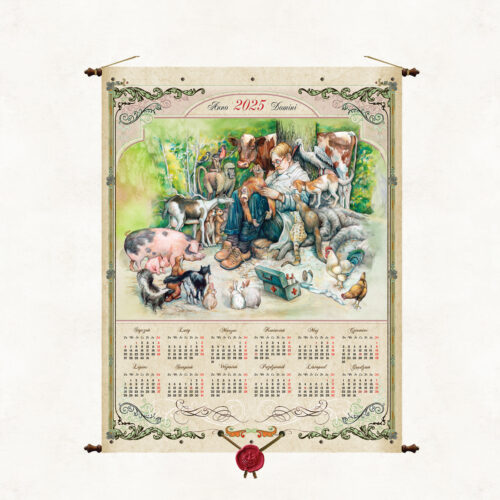-
A unique map filled with oriental style illustrates both the cartographic image of China and the specific nature and culture of the center country and its cantons. At the bottom of the map is one of the most recognizable symbols of China, the Square of Heavenly Peace (Tiananmen Square). The side frames show the most famous monuments and symbols of Chinese culture and tradition. The publication is bound on wooden poles with decorative tips and topped with a suspended Chinese wax seal. The publication belongs to a series of maps created at the request of the Polish Olympic Committee. It was made in 2008 for the XXIX Summer Olympic Games, which took place in Beijing, the capital of China.
-
A map of the Rudziniec Forest District, one of 38 forest districts that form part of the Regional Directorate of State Forests in Katowice. The map presents a brief description of the forest district, forest divisions and forest habitat types.
-
"Poland is a land of ancient primeval forests and thousands of lakes spread on hills and plains between the Baltic Sea and the high Tatra Mountains. History has endowed our country with a unique place on Earth, thanks to which beautiful Polish landscapes four times a year undergo extraordinary metamorphoses delighting with the dynamics of nature, its unusual colors and moods." The map “Nature of Poland” is a publcation unique and beautiful, full of images and symbols of the natural heritage of our country. It is a map - sanctuaries of Polish nature, which should, like the works of Mickiewicz, go under thatched roofs to give and strengthen in us a sense of connection with nature and responsibility for it. Maintained in the convention of old cartographic works, it tells about the treasures of nature that have survived to our time. It presents in decorative cartouches business cards of Polish national parks, gives the most important natural and geographical information about Poland, describes the forms of environmental protection used in our country, beautifully promotes Polish nature. Wishing to popularize the natural beauty of our country, we have published two twin maps, “Nature of Poland” and “Forests of Poland”, which in a complementary way present the overall resource of Polish nature. National parks are the mothers of Polish flora and fauna, but they are not a separate and independent natural creation, they are part of our natural environment, which includes many components such as forests, landscape parks, areas of protected landscape, agricultural land and, of course, water. National parks account for only 1% of our country's land area. The remaining 29% is made up of forest areas owned by the State Forestry Service.
-
A publication dedicated to soldiers and all defenders of freedom and peace gathered around the North Atlantic Treaty Organization (NATO). In an allegorical illustration referring to the Arthurian legend of the Knights of the Round Table, we have shown representatives of NATO member states stylized as knights. The motto of the calendar is a Latin proverb, paraphrased from the prologue to the work On the Art of War by Vegetius, a Roman historian from the 4th century AD Si vis pacem, para bellum – “If you want peace, prepare for war”. In the cartouches forming the frame of the image, we have placed the emblems of NATO countries.
-
A stylized "herbal" calendar reminiscent of the famous Hippocratic maxim - Your food should be your medicine and your medicine your food. Referring to Hippocrates' dietary advice, we have placed on the board a description of the most important medicinal herbs along with their illustrations and drawings by Leonardo da Vinci from around 1490. The main illustration is the Vitruvian Man. The work is a revision of Vitruvius' concept of the proportions of the human body. The Vitruvian Man is Leonardo's most famous drawing, considered a symbol of combining art with science.
-
A publication dedicated to veterinarians and all those sensitive to animal suffering. In an allegorical illustration, we have presented a veterinarian during an operation on a sick animal. Around the veterinarian, various species of animals (potential patients) are gathered, experiencing with compassion this painful situation for the monkey.

